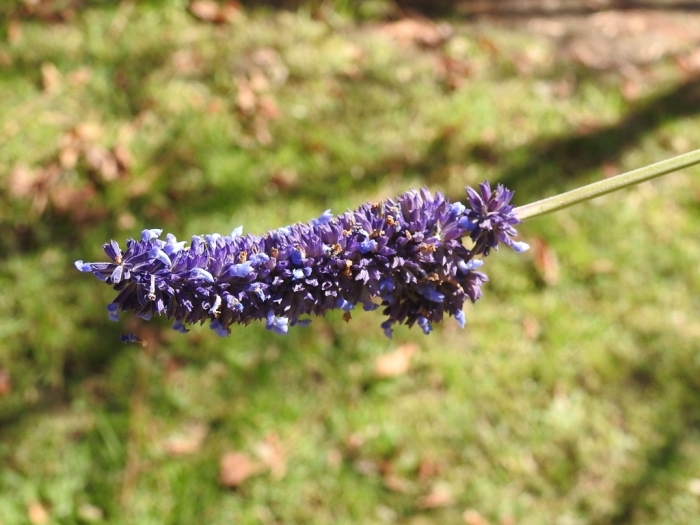Lavender Leaf Sage
(Salvia lavanduloides)
Lavender Leaf Sage (Salvia lavanduloides)
/
/

Neptalí Ramírez Marcial
CC BY 4.0
Image By:
Neptalí Ramírez Marcial
Recorded By:
Copyright:
CC BY 4.0
Copyright Notice:
Photo by: Neptalí Ramírez Marcial | License Type: CC BY 4.0 | License URL: http://creativecommons.org/licenses/by/4.0/ | Rights Holder: Neptalí Ramírez Marcial | Publisher: iNaturalist | Date Created: 2018-01-05T13:07:52-08:00 |

























Estimated Native Range
Summary
Salvia lavanduloides, commonly known as Lavender Leaf Sage, is a perennial herb that is native to the montane forests and pine-oak woodlands of Mexico, Guatemala, Honduras, and Costa Rica. It typically grows in areas with well-drained soils at higher elevations. Lavender Leaf Sage reaches a modest height of 2-3 feet (0.6-0.9 meters) and spreads to a similar width. The plant has a bushy habit with grey-green, lavender-scented leaves that resemble those of true lavender. It produces spikes of blue to violet flowers from late spring to early fall, which are highly attractive to bees and butterflies.
Lavender Leaf Sage is valued for its fragrant foliage and long blooming period, making it a popular choice for herb gardens, borders, and as a sensory plant in therapeutic gardens. It is drought-tolerant once established, requiring minimal water, and prefers full sun to part shade conditions. Well-drained soil is essential to prevent root rot. This sage is not known for aggressive roots or significant disease problems, but it can be susceptible to powdery mildew in humid conditions. It is also deer-resistant, which is a notable benefit for gardeners in areas with high deer populations.CC BY-SA 4.0
Lavender Leaf Sage is valued for its fragrant foliage and long blooming period, making it a popular choice for herb gardens, borders, and as a sensory plant in therapeutic gardens. It is drought-tolerant once established, requiring minimal water, and prefers full sun to part shade conditions. Well-drained soil is essential to prevent root rot. This sage is not known for aggressive roots or significant disease problems, but it can be susceptible to powdery mildew in humid conditions. It is also deer-resistant, which is a notable benefit for gardeners in areas with high deer populations.CC BY-SA 4.0
Plant Description
- Plant Type: Herb
- Height: 2-3 feet
- Width: 2-3 feet
- Growth Rate: Moderate
- Flower Color: Blue, Purple
- Flowering Season: Summer
- Leaf Retention: Deciduous
Growth Requirements
- Sun: Full Sun
- Water: Medium, High
- Drainage: Medium, Fast
Common Uses
Bird Garden, Butterfly Garden, Deer Resistant, Drought Tolerant, Hummingbird Garden, Low Maintenance
Natural Habitat
Montane forests and pine-oak woodlands
Other Names
Common Names:
Scientific Names: , Salvia lavanduloides, Salvia fratrum, Salvia humboldtiana, Salvia lavanduloides var. hispida, Salvia lavanduloides var. latifolia, Salvia purpurina, Salvia purpurina,
GBIF Accepted Name: